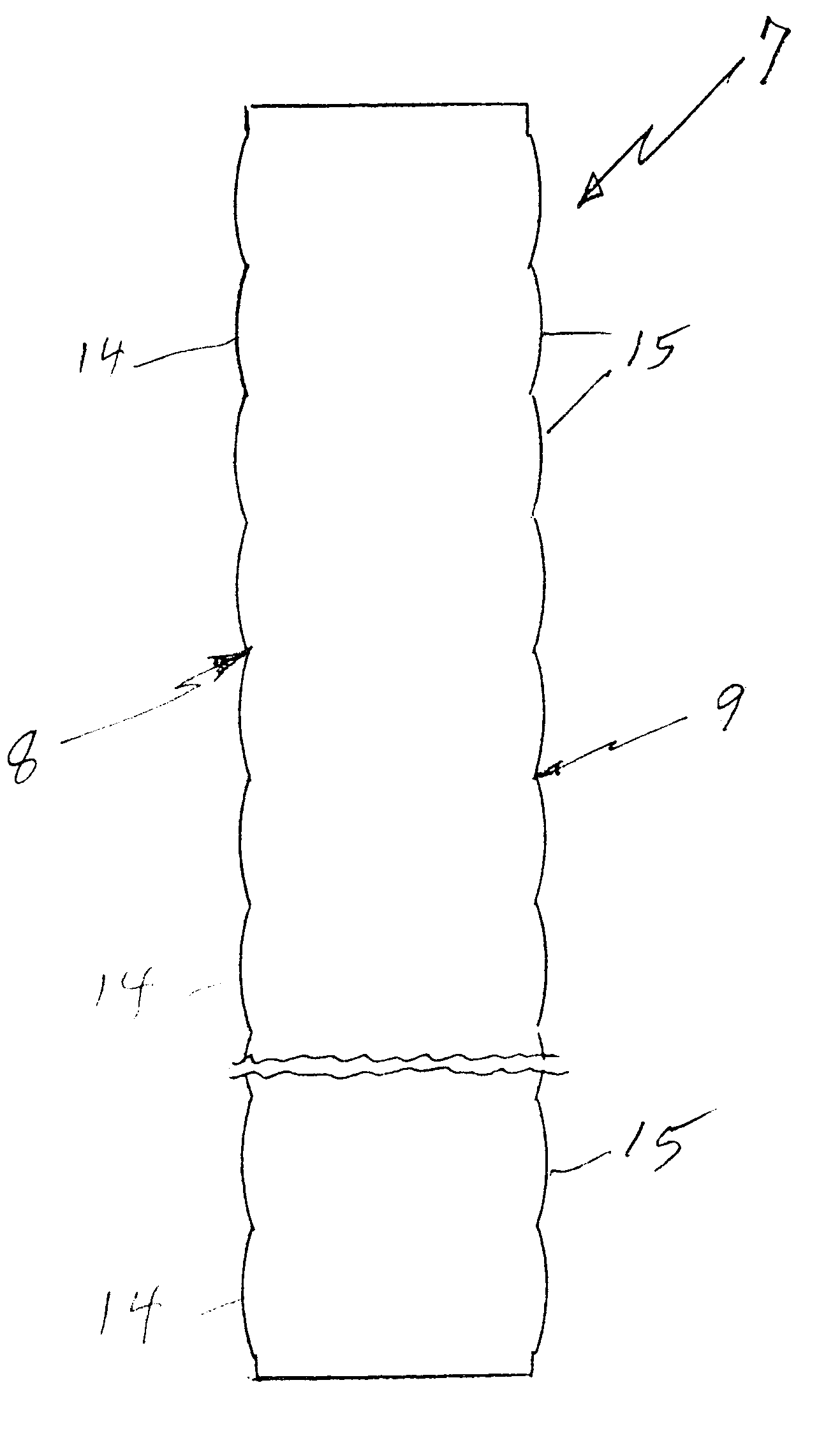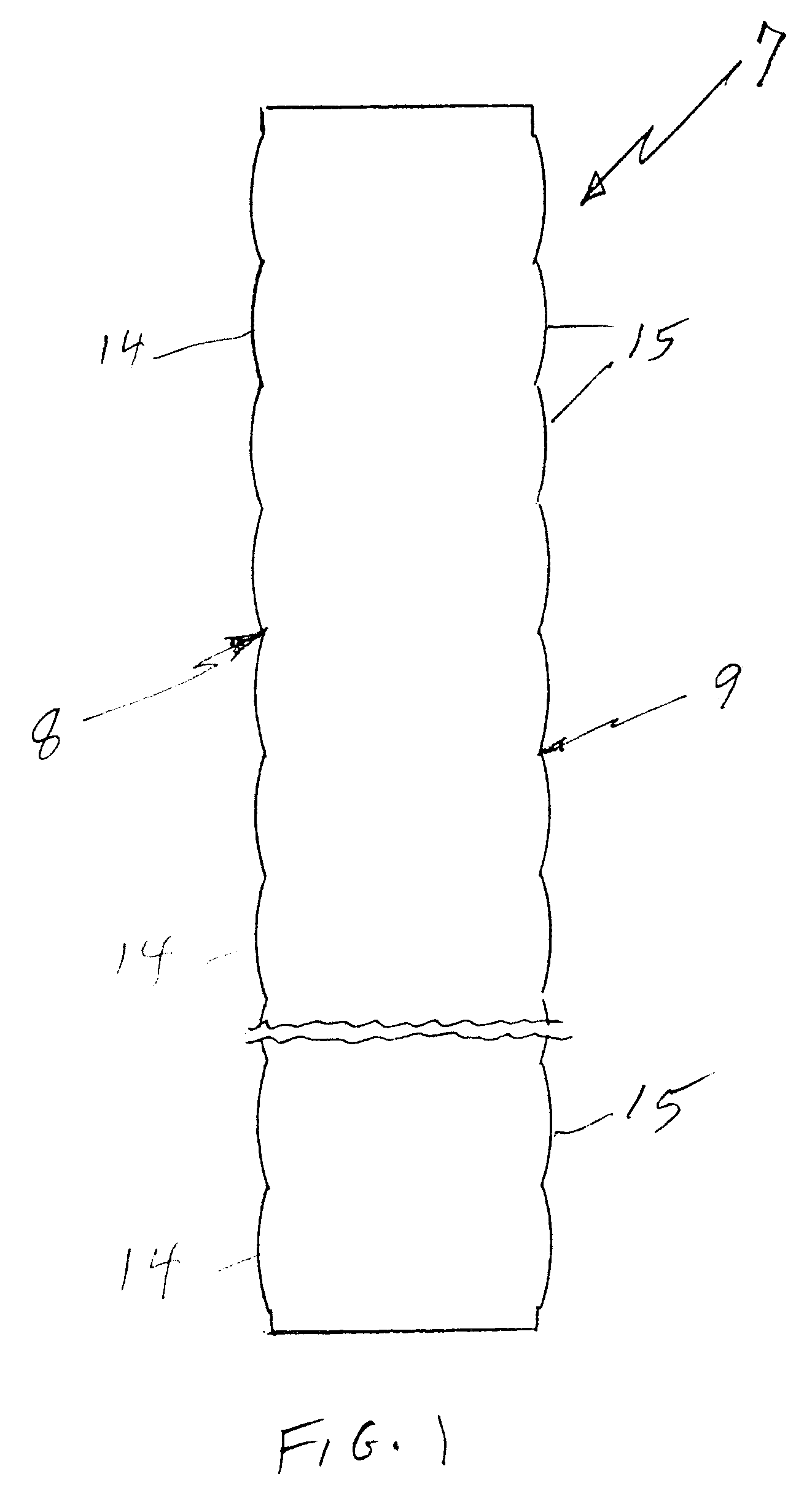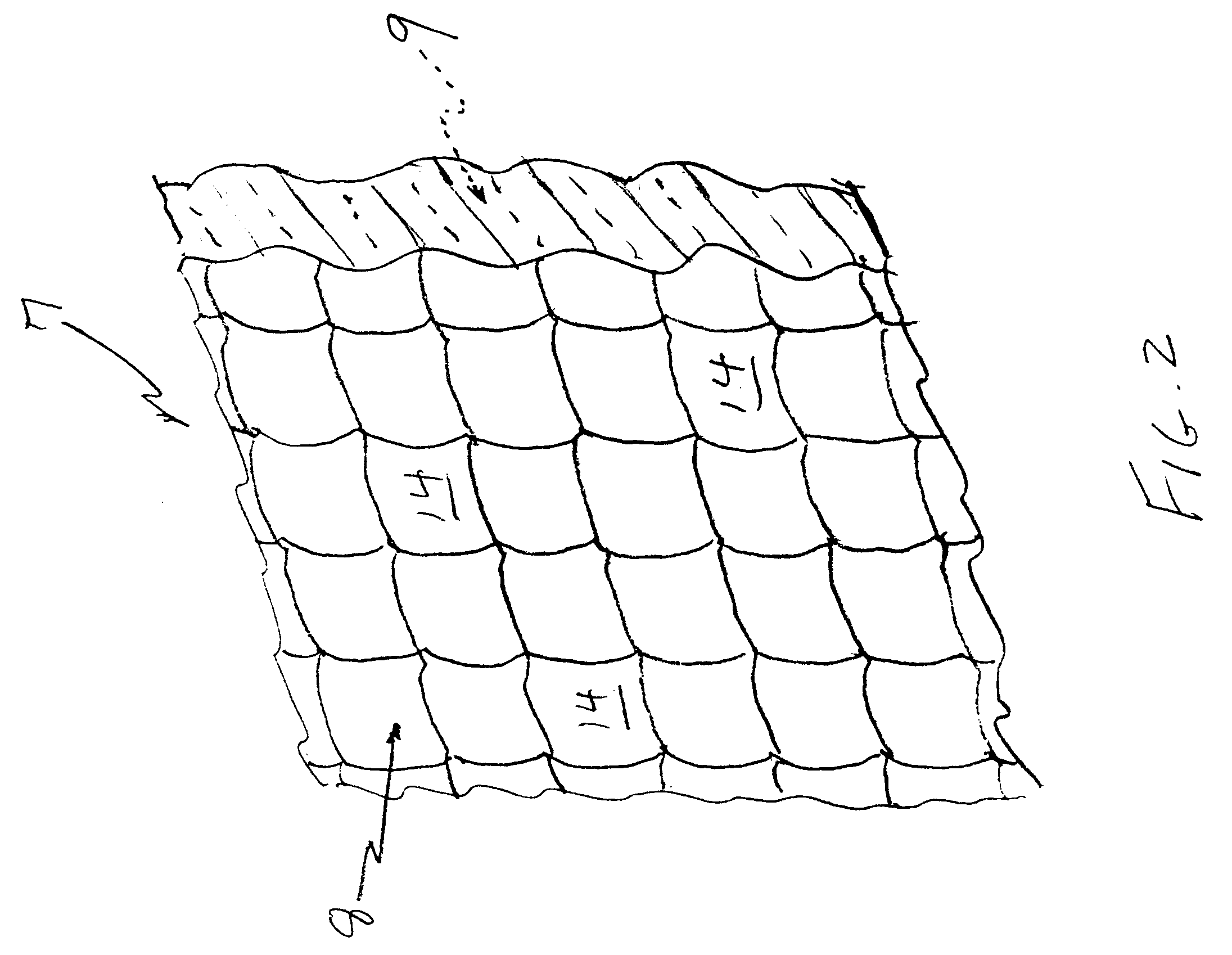Short pulse laser protection fly's eye lens
- Summary
- Abstract
- Description
- Claims
- Application Information
AI Technical Summary
Benefits of technology
Problems solved by technology
Method used
Image
Examples
Embodiment Construction
The concept of the aforementioned patent is to focus the incoming laser radiation with sufficient magnification to increase the laser pulse energy to a high enough level so as to generate a laser induced aerosol breakdown which will absorb 99% or more of the laser energy and thereby protect the high gain optical system (eyes or equipment) from optical damage. The breakdown phenomenon results from a free electron accelerated by the laser radiation field, which gains sufficient energy to ionize an atom upon collision. This then becomes two electrons, and if the laser intensity is sufficiently high, leads to full ionization and, therefore, breakdown.
Referring to FIGS. 1 and 2, a lens array 7 in accordance with the invention has an optical entry surface 8 and an optical exit surface 9, each surface having formed therein a plurality of frusto-spherical, convex lenses 14, 15 formed therein.
As illustrated in FIG. 3, each pair of optical entry lens 14a and optical exit lens 15a correspond t...
PUM
 Login to View More
Login to View More Abstract
Description
Claims
Application Information
 Login to View More
Login to View More - R&D
- Intellectual Property
- Life Sciences
- Materials
- Tech Scout
- Unparalleled Data Quality
- Higher Quality Content
- 60% Fewer Hallucinations
Browse by: Latest US Patents, China's latest patents, Technical Efficacy Thesaurus, Application Domain, Technology Topic, Popular Technical Reports.
© 2025 PatSnap. All rights reserved.Legal|Privacy policy|Modern Slavery Act Transparency Statement|Sitemap|About US| Contact US: help@patsnap.com



